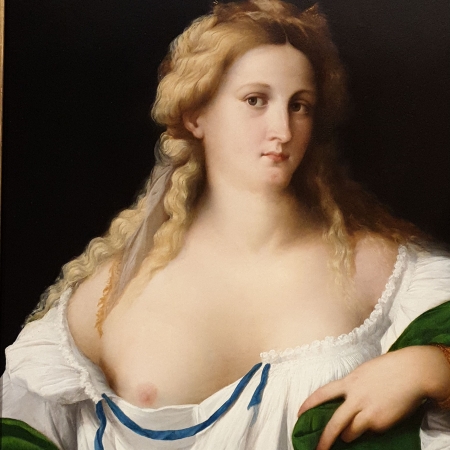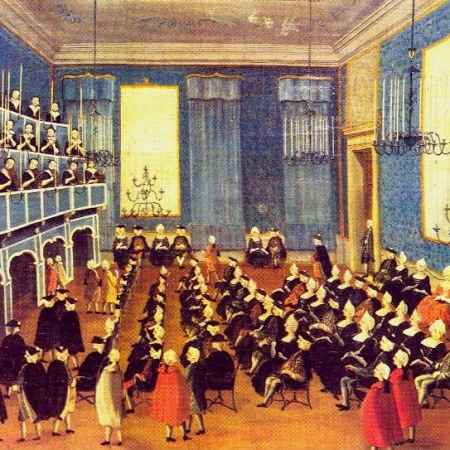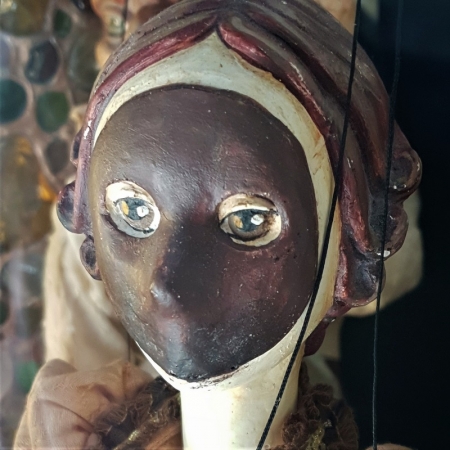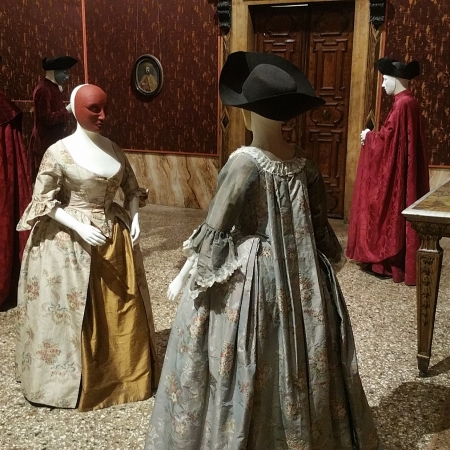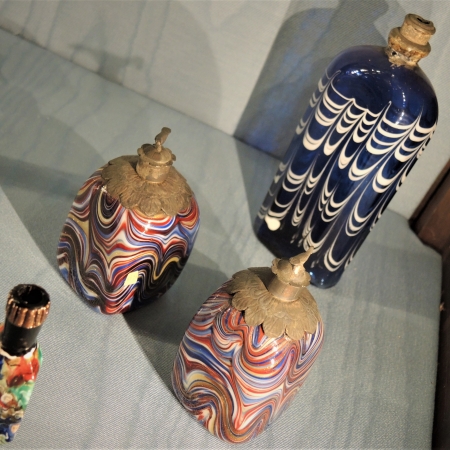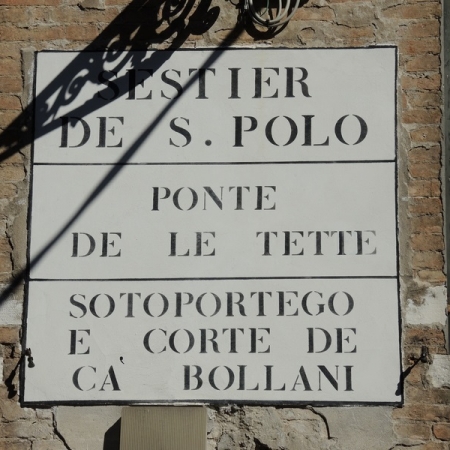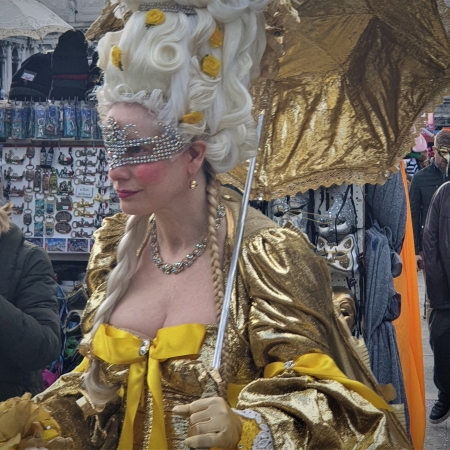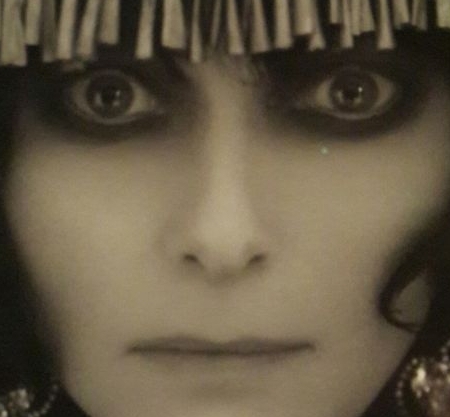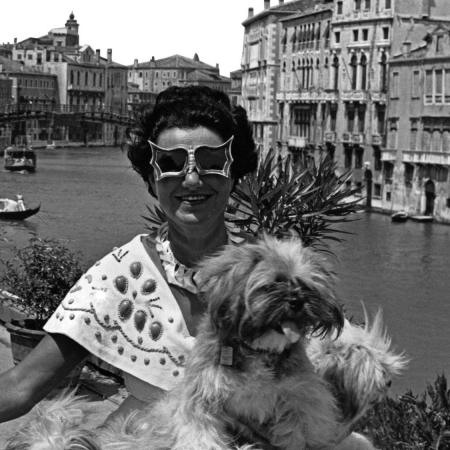WOMEN IN VENICE
Our first stop is the Ospedale della Pieta’, an institution for foundlings and orphans, where Antonio Vivaldi worked as a violin teacher and choirmaster in the 18th century.
The tiny museum preserves unique items related to the mothers, books recording rules for the admission of children, musical instruments played by the girls, old musical scores, and more.
This collection of historic items offers a brilliant example of how charity dealt with education and hope for a better life.
We will then navigate the Grand Canal in a water taxi, recalling the days when Marquise Luisa Casati and Peggy Guggenheim enriched the city with eccentric parties at their homes.
We will proceed to Ca’ Mocenigo, in the district of Santa Croce.
The imposing building was a private noble residence, still in good part furnished with its original pieces.
In 1985 it became the museum of Venetian costumes and textiles.
On display, a splendid variety of fabrics and garments ranges from the 15th to the 18th centuries.
Women’s clothing includes corsets, embroidered shawls, lace fans, silk hoses, and shoes.
Recently a local sponsor bequeathed a private 18th-century collection of rare perfume bottles, sometimes manufactured in Murano.
A delicate fragrance gently pervades the rooms and accompanies us during the entire visit.
Descriptive panels tell the history of perfume trading routes, the making of soaps, and cosmetics in Venice. Clear glass pots preserve exotic raw materials, soap powders, dry roots, colorful minerals.
Visitors are allowed to touch and smell, adding to the pleasure of the eye the joy of a pleasant scent!
A few steps away, in a gloomy district known as Carampane, located just behind the Rialto market, an army of professional prostitutes, under strict government control, once offered their services to sailors and merchants.
HIGHLIGHTS
- Vivaldi Museum at La Pieta’
- Private boat ride on the Grand Canal
- Ca’ Mocenigo Museum of Costume and Perfume
- Ancient red light district in Rialto
MORE ABOUT
THIS TOUR
The patriarchal aristocracy ruling Venice didn’t recognize any political right for women.
However, women still managed to influence economic and social matters. Family relations, marriages, and dowries were the areas in which women interacted dynamically with men.
Women of the nobility and upper class donors were active in the maintenance of charitable institutions, such as hospices and orphanages, which permitted the survival of thousands of helpless people.
Lower classes girls traditionally worked at home as lace or part-time necklace makers, or embroiderers. Some of them were skilled silk weavers, on the heydays of Venetian brocades and damasks.
Nevertheless, home servants or street vendors enjoyed considerable freedom of movement within their neighborhood.
DRESS CODE AND ADVICE
- No shorts, no sleeveless shirts. Knee high skirts and short sleeves are ok!
- Vivaldi Museum and Ca’ Mocenigo are closed on Mondays.
COST
- This tour lasts three hours and costs 490 euros up to six people (not per person), only private parties.
- TRANSPORTATION: Included by private water taxi
- Museum fees per person:
- Vivaldi Museum: 10 euros
- Ca’ Mocenigo (Museum of Costume):12 euros (full rate)-9.50 euros (reduced rate)

